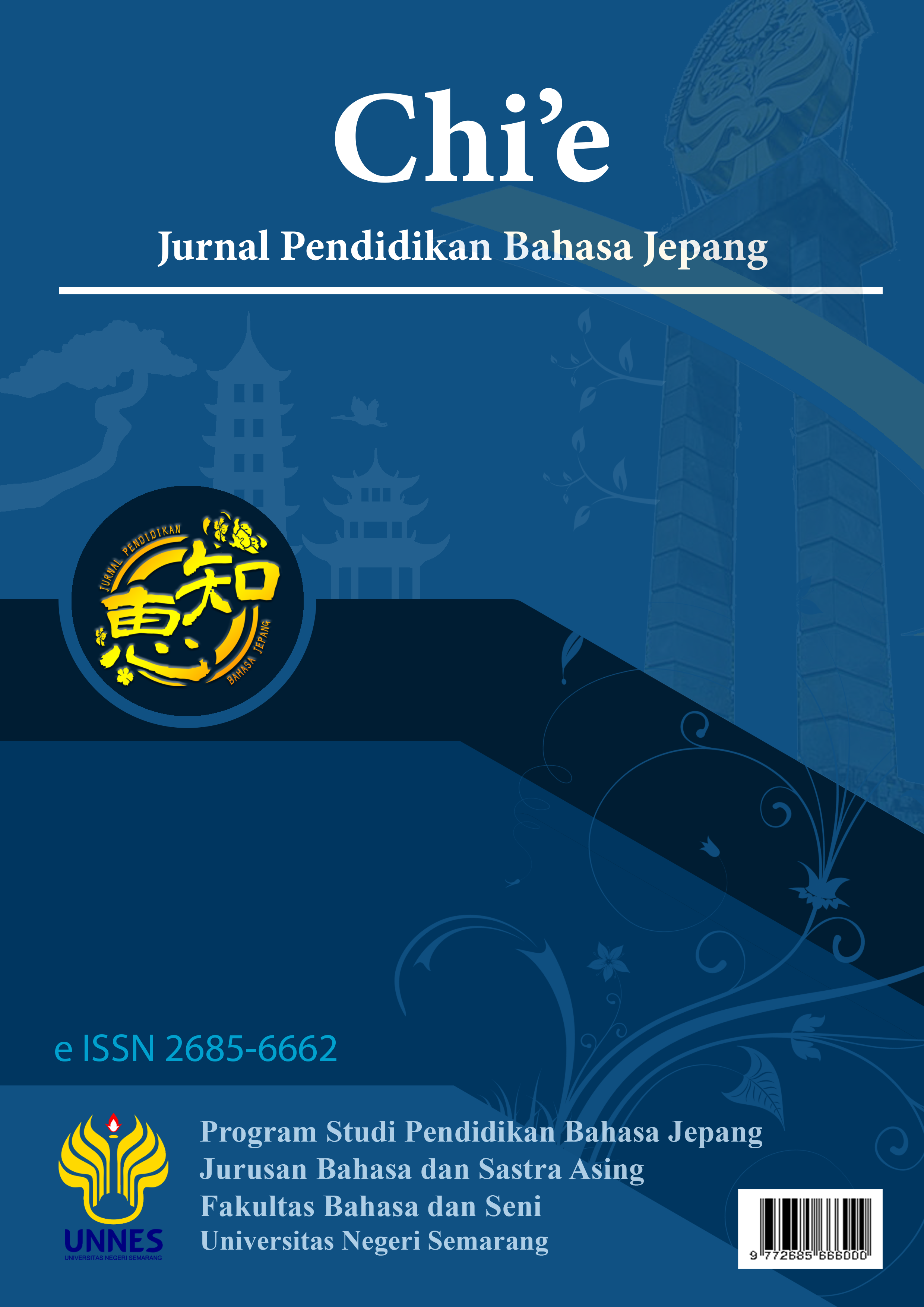Japanese Keigo: ‘Situational Context Analysis’ and ‘Politeness Strategies’ in Violet Evergarden Anime
Abstract
Honorific speech (politeness) or keigo is an ingrained part of the Japanese language and culture. The honorific speech may be difficult to say due to particular words, comprehension, and context-based in the Japanese business environment. As a work of modern culture, anime can be used to analyze and comprehend keigo in society. This study will analyze keigo based on context analysis and speaker strategies. The method employs a qualitative approach with data collected through content analysis from the first six famous anime works, namely Violet Evergarden. The two theories used in this study are Tokieda Motoki of Language Process Theory explained by Masako Naito and Brown & Levinson modified Politeness Theory by Hori. Based on the results, two theories could be interrelated to explain keigo, in which language process theory showed keigo politeness expression related to the ‘situation’ or ‘context’ or called bamen, and politeness theory employed the speaker's politeness strategy. The results demonstrated how the protagonist in the anime uses three types of keigo: sonkeigo, kenjougo, and teineigo, and how the situational context could affect the speaker's strategies. Situational context and speaker's strategies to use keigo could be utilized as educational tools in Japanese language pedagogy or another context.















